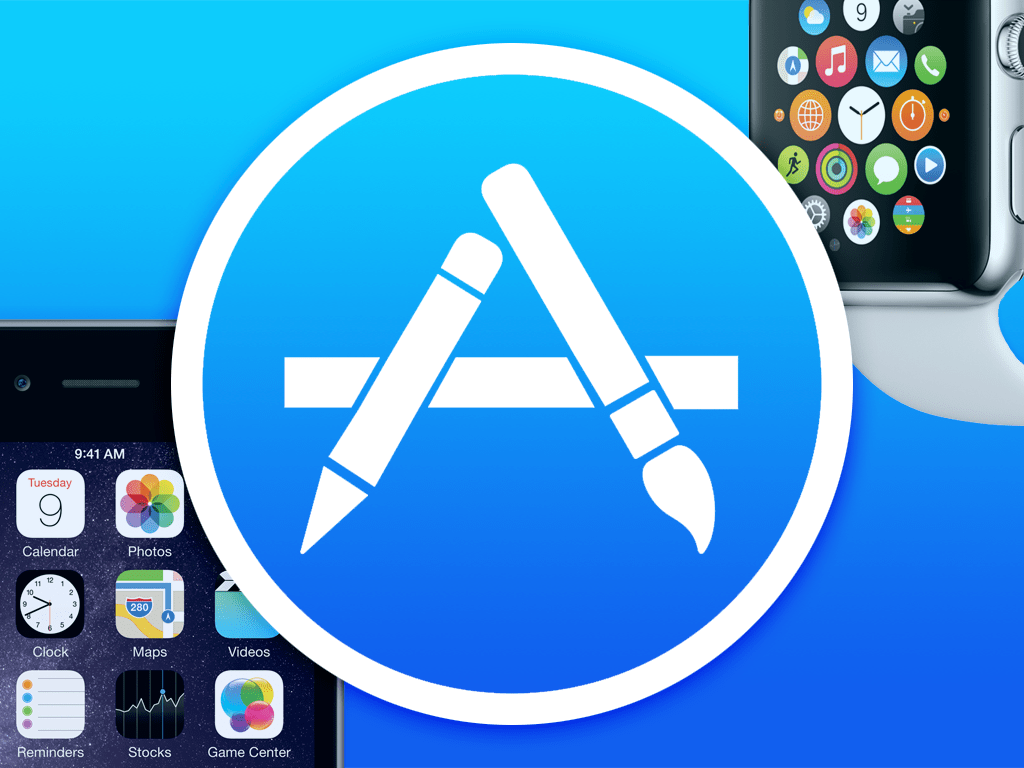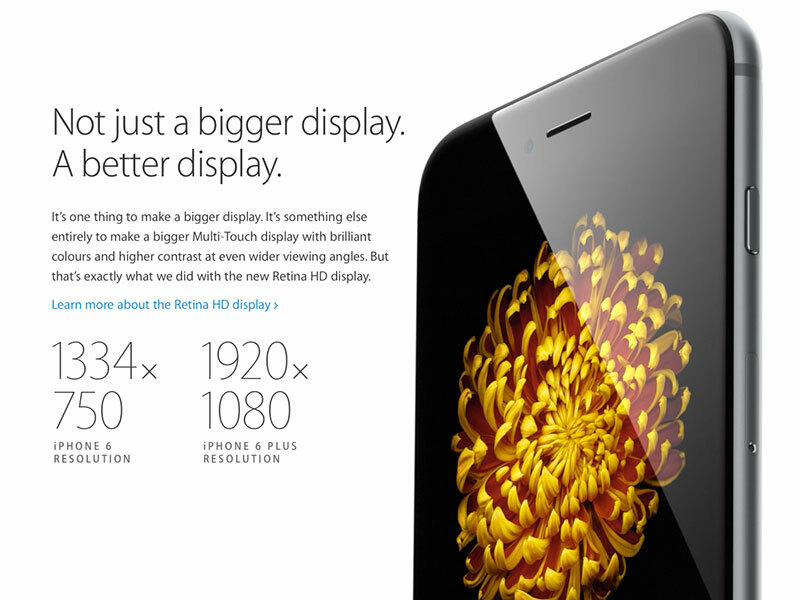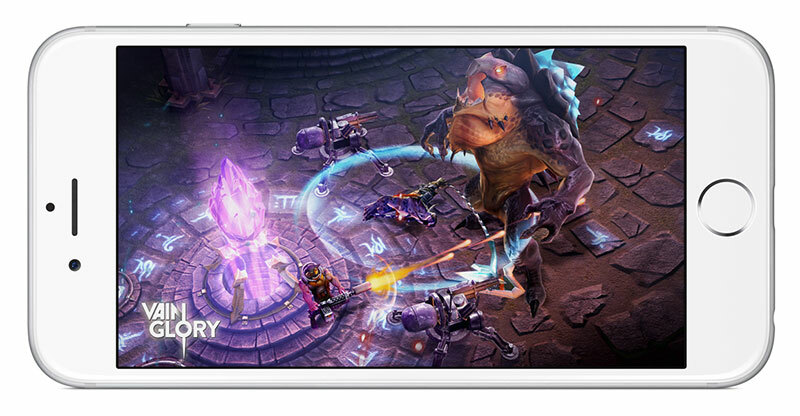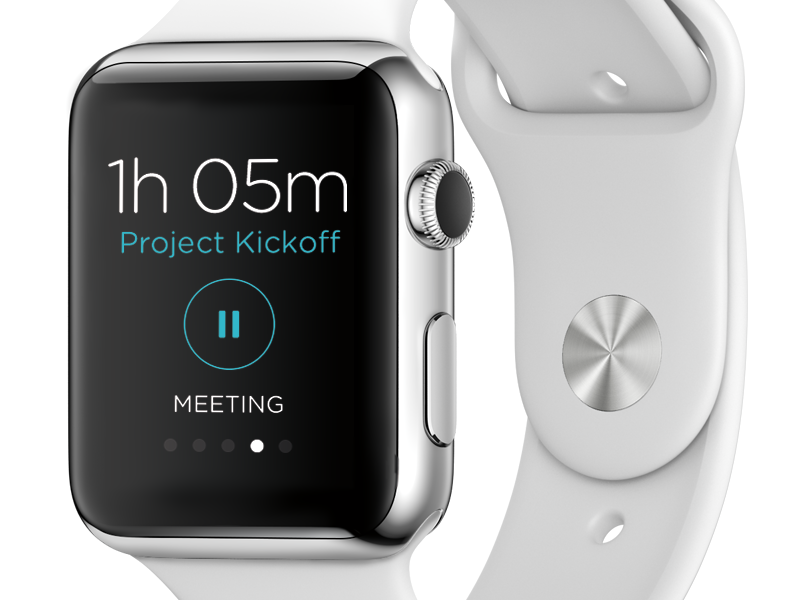iPhone 6, iOS 8 and Apple Watch: how your apps will evolve
We talk to the app makers to find out how Apple’s new kit and mobile OS will impact on the apps and games you love

The iPhone 6, the iPhone 6 Plus, the Apple Watch and iOS 8 are all big steps forward for Apple. But hardware is nothing without software; even iOS 8 is really only a foundation for the playground in which app and game developers frolic.
To get a sense of how apps and games might now evolve on iPhones and iPads, we spoke to a range of developers. They revealed the challenges and opportunities Apple’s new hardware and software will bring, and what this will mean for the iPhone and iPad (and, soon, Apple Watch) apps and games you use every day.
READ MORE: Apple iPhone 6 review
The big screen

The iPhone 5s display boasts a screen resolution of 1136 x 640, but both of Apple’s new iPhones have larger screens and more pixels to play with: 1334 x 750 for the iPhone 6 and 1920 x 1080 for the iPhone 6 Plus. Existing apps zoom to fill these extra pixels, making use of iOS 8’s scaling capabilities, but developers are looking forward to reworking their apps to fully take advantage of the extra space.
Good.iWare CEO Yuri Selukoff says “the larger the screen, the better it is for reading”, and hopes people with new Apple devices will “spend more time reading and annotating documents, which means more possibilities for apps like GoodReader”. Mike Ferenduros, creator of iPad comic reader Chunky, says the new devices are “enough to push me into finally making my app universal, simply because bigger screens turn the new iPhones into better comic readers”. Elsewhere, SplashData CEO Morgan Slain sees a new lease of life for the many productivity apps that use list-based interfaces: “Extra pixels help you deliver more user records at once, saving people time and effort in scrolling and searching.”
READ MORE: Apple iPhone 6 Plus review
According to developer Benjohn Barnes, people with multiple iOS devices will start to see “smoother transitions from ‘phone’ to ‘tablet'”, when it comes to apps. Developer frameworks now define the similarities between devices, instead of considering them entirely separate units. This is already apparent with the iPhone 6 Plus, which in landscape boasts a two-column display in Apple’s apps – something third-parties are sure to mimic.
From a developer standpoint, this means more work, which could potentially impact on app updates and pricing. However, developer Luke Redpath called this a “wake-up call”, arguing developers should be using resolution-independent graphics and auto-layout capabilities as the number of available devices proliferates. PCalc creator James Thomson adds that although Apple omitted talking about the specifics of its new devices at WWDC 2014 in June, it was possible to read between the lines regarding imminent larger iPhones “and possibly bigger iPads with a split-screen option”.
The message, he says, was “don’t assume screen sizes are fixed any more”. While demanding a shift in approach and extra work for developers in the short term, embracing Apple’s new thinking will, argues Thomson, “make apps more flexible”; he reckons if Apple came out with a 7in iPhone tomorrow, his PCalc app would already adapt with no extra work.
Panic’s Neven Mrgan also enthuses about the manner in which Apple has provided guidance and tools, but complains that the rest of a developer’s toolkit is lagging: “Design apps need to start helping out by natively supporting concepts such as adaptive UI or even multiple canvas sizes that reuse basic elements. Little pieces of functionality are trickling in, but we still have to do a lot of manual hacking to design for all the different iOS devices.”
Playing the game

Mrgan notes he’s spent 15 years sweating over pixel precision, following the idea that a good designer must arrange everything just so. But techniques need revising now the iPhone’s moving towards extremely high-resolution screens, flexible viewport sizes and scaled graphics. Games creator Kevin Ng wonders how developers of retro-style pixellated games like Wayward Souls will now fare, since they relied on whole-number scaling to blow imagery up in a manner that always remained sharp. “Their choice is now whether to allow fuzzy edges or crop the game world on certain devices, which could give unfair advantages to some players in multiplayer,” he says.
Elsewhere, though, developers see few problems regarding bringing games to the iPhone 6 and iPhone 6 Plus. Ng notes the screens are still 16:9, like the one on the iPhone 5 and 5s, meaning interfaces can remain largely the same, bar minor adjustments for ‘thumb reach’ and textures. He also dismisses any notion iOS has turned into something like Android for games creation, and even suggests Android has benefitted iOS developers: “We’ve had to deal with Android’s many resolutions for years, which has forced games designers to start thinking in a resolution-agnostic manner. Because of this, many games should work fine out of the box with the new iPhones.” Games developer Greg Wohlwend adds that this also works in reverse: “If you make a game and it does well, you’ll want it to work on everything. So starting with a more flexible output in mind will help minimise headaches when porting to new systems.”
READ MORE: iOS 8 review
Giant Spacekat head of development Brianna Wu is also extremely positive about the potential for games on the new iPhones. She similarly dismisses Android comparisons — “The problem there isn’t so much screen sizes as dealing with all the different hardware” — and reckons games are “simply more fun to play on a bigger screen”. She wonders whether larger iPhones could impact on Vita sales, and notes that Apple’s Metal technology could be transformative to mobile gaming.
“Metal’s going to let gaming on your iPad and iPhone look closer to games on a console. Those things that really make you go "WOW!" when you play a PS4 game is what Metal lets devs do better than ever before, solving limitations regarding particle effects and transparency,” she explains. “My belief is because of Metal you’re going to see way more games on consoles ported specifically to iOS, because they’ll simply run better now.” Wu notes that Metal is also something that could impact on Android, because the sheer fragmentation of hardware and software makes a similar system on that platform practically impossible to implement.
Building extensions

Beyond the screen, it’s iOS’s newfound extensibility that has developers excited. Previously, every app was a silo, but that’s about to change. “I’m not a hyperbolic person, but iOS 8 app extensions could be the biggest thing to happen to third-party iOS apps,” believes David Chartier of AgileBits.
Whereas before it was hard to get iOS apps to work together and exchange information, Chartier says iOS 8 “blows that all wide open”. This will lead to new classes of apps, and also make existing apps and services more powerful. You’ll be able to clip anything from Safari to Pinterest, collect content into Evernote, have 1Password fill passwords, and more. “It’s about faster workflows and ultimately providing more power to end users,” says Oliver Waters of d3i.
By way of example, games developer Ian McLarty says he uses his iPad for music composition, and will no longer have to use extra apps to read data and then transfer it to Dropbox. And Iconfactory’s Gedeon Maheux notes how developers can add value to existing offerings, such as PCalc’s Today View extension that optionally resides in Notification Center: “People love it because you get instant access to a calculator right from the lock screen. There are so many possibilities and opportunities here.”
Elsewhere, Touch ID is now available for third-party apps (“A big win for anyone who wants an extra layer of security,” according to Metaclassy‘s Jorge Pedroso), and Handoff will enable the seamless transition of in-progress content between devices. Wu wonders whether Steve Jobs’s Apple would ever have allowed such things, and reasons this renewed Apple is “getting better”.
There are some notes of caution, however. Chartier says developers must be careful to alert users about integration features, because although they’re installed with app updates, they are not enabled by default. Mrgan hopes a “market of apps aiming to replace system services won’t devolve into a contest of cleverness and giddiness, like we’ve seen in the past, and will instead compete on feature quality and robustness”. Redpath, though, is convinced things will go well: “Extensions have the potential to really change how we all use iOS, and I get the impression Apple intends to develop new ‘extension points’ in the future. But for now, being able to share data between apps without having to switch apps is a killer feature.”
Watch this space

Of course, Apple’s recent event wasn’t only about the iPhone — Apple Watch was unveiled, which the company says developers will be able to create apps for. Barnes warns that the ‘watch’ part of the device’s name is essentially a misnomer: “I’m not sure thinking of it as a watch will be any more useful than thinking of the iPhone as a phone. It’s really a computer you can carry around even more easily.”
As for the apps, Chartier notes it’s a “totally new platform, which will require new thinking for new use-cases”. It eschews multitouch and has a tiny screen, which will prove challenging to app and game creators. Chartier reasons those who “truly think outside the box will be most successful,” while Maheux is excited by the interface: “Already, everything’s starting to gel and vibe — the animations are fluid and make sense, and the design is clean and purposeful. I can’t wait for something like the Apple Watch’s Home screen to come to the iPhone…”
In terms of what we’ll see, it’s all speculation for now. Stephen Dodd of Office Time reckons it’ll be perfect for tracking your life, including for business uses, such as timing billables by client. Waters sees loads of potential in health and personally connected apps, with the Apple Watch sensors and ‘taptic’ engine collecting and feeding back data to users in new ways. And Morgan is looking forward to non-obvious applications: “Notifications, exercise apps and remotes seem obvious enough, but what about games, creation tools and companion accessories? Three years from now, millions will use a hip new Apple Watch service we can’t even imagine today.”
READ MORE: Apple Watch hands-on
Tight squeeze

As ever, there was some disappointment following Apple’s September event. Mobile app developer Luke Durrant wasn’t thrilled at Apple keeping 16 GB devices in the line-up (and, worse, the 8 GB iPhone 5c), and said this means developers will have to take extra care to keep app builds small so they don’t take up too much space: “I’ve seen people with such devices who can’t even update to iOS 8, because they have 6 GB of photos and just a few apps”. With larger screens, the demand for bigger assets only amplifies this problem.
Pedroso also says it’s getting increasingly hard for independent developers to keep pace: “For the last couple of years, we’ve been spending months just playing catch-up with updates to iOS, OS X and devices. And this year, Apple’s released even more stuff.” He adds he doesn’t want to sound too negative — Apple’s updates are good for business — but such stressful periods can with smaller developers propel apps into a kind of maintenance mode rather than their creators working on planned new features. There’s also a question of stability, with betas, developer tools and even the final shipping operating systems coming under fire.
Developers have also been criticised due to many early iOS 8 updates not being properly optimised for iOS 8. Many apps simply zoom the interface and fix a few bugs, and some games don’t work at all on the iPhone 6 Plus. Durrant appeals to users to allow developers a little time. “It’s going to take a while for developers to take full advantage of the new APIs and capabilities, and the full power of everything Apple’s released won’t come until later,” he says. “But I think we are already on the next chapter in the iOS app ecosystem.”
READ MORE: Apple iPhone 6 review



